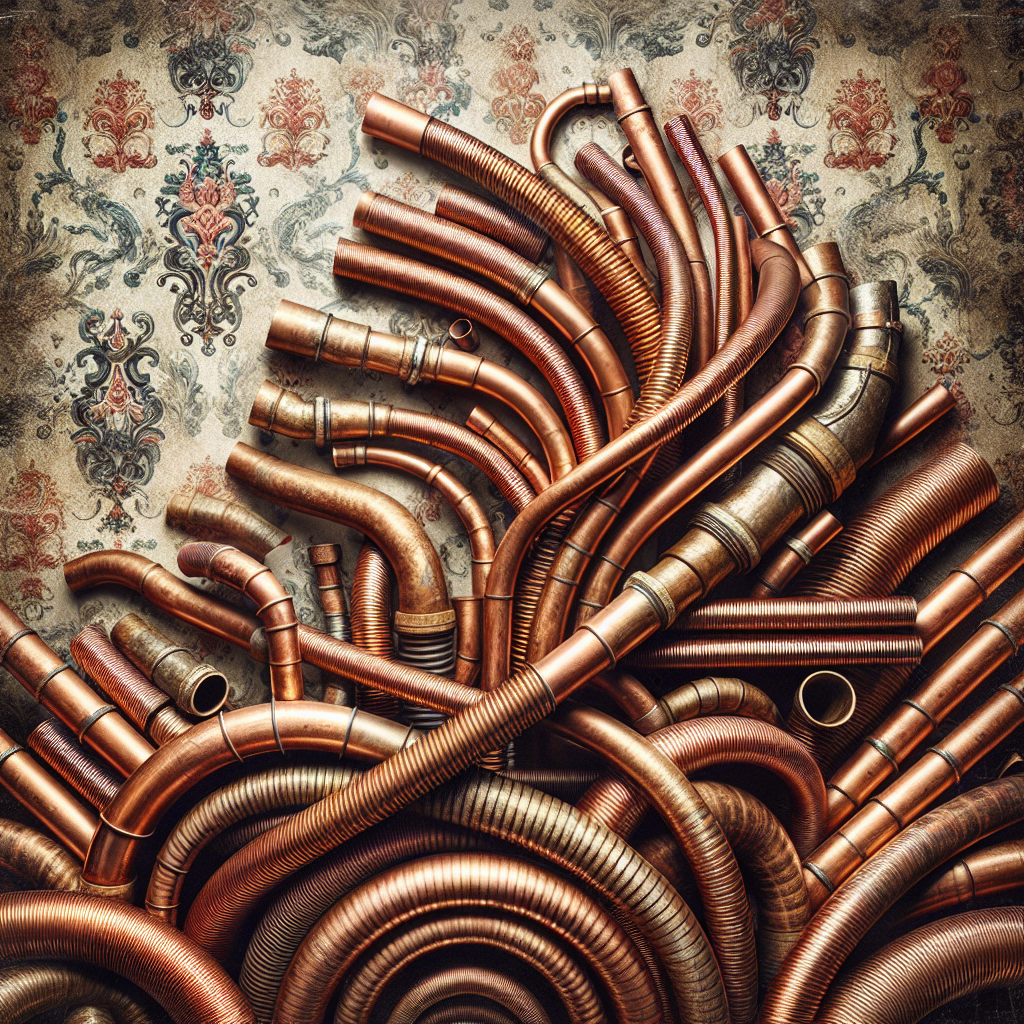When it comes to older homes, there are a few important plumbing considerations that should not be overlooked. The plumbing systems in older homes may have been built decades ago, and they may not meet the modern standards and requirements of today. This means that there could be potential issues with outdated pipes, fixtures, and even sewage systems. It is crucial to pay close attention to these plumbing considerations to ensure the safety and functionality of your home. In this article, we will discuss the key factors to consider when dealing with plumbing in older homes and provide you with essential tips to address these issues effectively.
Assessing the Plumbing System
Checking the Pipes
When assessing the plumbing system in an older home, one of the first things you should do is check the pipes. Older homes may still have galvanized pipes, which can corrode over time and develop leaks. Inspect the pipes for any signs of corrosion, such as rust or discoloration. Look for any obvious leaks or dripping pipes as well. It’s important to address these issues early on to prevent further damage.
Evaluating the Water Pressure
Another important aspect to assess in an older home’s plumbing system is the water pressure. Low water pressure can be a common issue in older homes due to pipe corrosion or mineral build-up. Check the water pressure in different faucets and showers throughout the house to ensure it is consistent. If you notice any areas with significantly low water pressure, it may be indicative of an underlying problem that needs to be addressed.
Inspecting the Sewer Lines
Inspecting the sewer lines is crucial when assessing the plumbing system in an older home. Older homes often have clay sewer pipes that can crack or deteriorate over time. Look for any signs of blockages, such as slow draining toilets or sinks. Additionally, inspect the sewer lines for any signs of damage or root intrusion. It’s important to address any issues with the sewer lines promptly to prevent sewer backups and further damage.
Examining the Water Heater
The water heater is another crucial component of the plumbing system in an older home. Check the age and condition of the water heater. Older water heaters may be less efficient and more prone to leaks or other issues. Look for any signs of leakage or rust on the water heater. Ensure that the temperature and pressure relief valve is functioning correctly. If the water heater is outdated or showing signs of malfunction, it may be time to consider upgrading to a newer, more efficient model.
Identifying Potential Issues
Corroded Pipes
Corroded pipes are a common issue in older homes with galvanized plumbing. Over time, galvanized pipes can corrode and develop leaks. Look for any signs of corrosion, such as rust or discoloration on the pipes. If you notice any leakages or dripping pipes, it’s essential to address them promptly to prevent further damage.
Leaking Pipes
Leaking pipes are another potential issue in older homes. Inspect all visible pipes for any signs of leakage, such as water stains or wet spots on walls or ceilings. Even small leaks can lead to significant damage if left unattended. If you notice any leaks, it’s important to repair or replace the affected pipes as soon as possible.
Blocked Drains
Blocked drains are a common problem in older homes, especially if the sewer lines are outdated or clogged with debris. Look for any signs of slow drainage or gurgling noises when using sinks or toilets. These can be indicators of a blocked drain. Addressing blocked drains promptly is crucial to prevent further damage and avoid potential sewer backups.
Rusty Water
If you notice rusty water coming from your faucets or showers, it may indicate an issue within the plumbing system. Rusty water can be caused by corroded pipes or a problem with the water supply. Have a professional plumber evaluate the source of the issue and determine the best course of action. It’s important to address rusty water promptly to ensure the water’s safety and prevent further damage to the plumbing system.
Low Water Pressure
Low water pressure can be a frustrating issue in older homes. It can be caused by various factors, such as pipe corrosion, mineral build-up, or problems with the water supply. Check the water pressure in different faucets and showers throughout the house to ensure it is consistent. If you notice significantly low water pressure in certain areas, it may be indicative of an underlying issue that needs to be addressed.

Upgrading Old Plumbing
Replacing Galvanized Pipes
If your older home still has galvanized pipes, it may be time to consider replacing them. Galvanized pipes are prone to corrosion and leaks over time. Upgrading to newer materials, such as copper or PEX pipes, can improve the longevity and reliability of your plumbing system.
Updating Water Supply Lines
Updating the water supply lines is another essential upgrade for older homes. Older homes may have outdated water supply lines, which can be more prone to leaks and other issues. Consider replacing the old supply lines with newer materials, such as copper or PEX, to ensure a more efficient and reliable water supply.
Installing Backflow Prevention Devices
Installing backflow prevention devices is an important upgrade for older homes. Backflow occurs when contaminated water flows back into the fresh water supply, posing health risks. Installing backflow prevention devices can help protect your home’s water supply from contamination and ensure safe and clean water for your daily use.
Upgrading to Modern Fixtures
Upgrading to modern fixtures can not only improve the aesthetics of your home but also enhance the efficiency and functionality of your plumbing system. Older fixtures may be less water-efficient and prone to leaks. Consider installing water-saving faucets, showerheads, and toilets to reduce water consumption and lower utility bills. Additionally, modern fixtures often have updated design features and improved performance.
Dealing with Lead Pipes
Identifying Lead Plumbing
Identifying lead plumbing in an older home is crucial for ensuring the safety of your household. Lead pipes were commonly used in plumbing systems before the 1950s and can pose serious health risks if consumed or released into the water supply. If you suspect your home has lead plumbing, it’s important to have a professional plumber inspect the system and conduct appropriate tests.
Understanding the Risks
Understanding the risks associated with lead pipes is essential for taking appropriate measures. Lead exposure can cause various health problems, especially in children and pregnant women. These can include developmental delays, learning difficulties, and other neurological issues. It’s important to address lead plumbing promptly to prevent health risks.
Replacing Lead Pipes
If your home has lead plumbing, it’s highly recommended to replace the lead pipes with safer alternatives. Replacing lead pipes requires careful planning and expertise, as it involves cutting into walls or floors. Hire a professional plumber experienced in lead pipe replacement to ensure a safe and efficient process.
Using Water Filters
Using water filters is an effective temporary measure to reduce lead exposure from your home’s plumbing system. Point-of-use filters or whole-house filtration systems can help remove lead particles from the water supply. However, it’s important to consult with a professional plumber or water specialist to determine the appropriate filtration system for your specific needs.

Addressing Outdated Sewer Systems
Evaluating the Sewer System
Evaluating the sewer system is crucial for identifying any potential issues in an older home. Older homes often have clay sewer pipes, which can crack or deteriorate over time. Have a professional plumber conduct a thorough evaluation of the sewer system to check for any signs of damage or blockages.
Potential Issues with Clay Pipes
Clay pipes, commonly used in older sewer systems, have a limited lifespan and can develop cracks or fractures over time. These issues can lead to sewer backups and costly repairs. If you notice signs of slow drainage, foul odors, or water intrusion in the yard, it may indicate a problem with the clay sewer pipes.
Upgrading to PVC Pipes
Upgrading to PVC pipes is a viable solution for outdated clay sewer systems. PVC pipes are more durable and resistant to cracks and root intrusion. They are also smoother, allowing for better water flow. Consider replacing the old clay pipes with PVC pipes to ensure a more reliable and efficient sewer system.
Repairing or Replacing Sewer Lines
If you notice significant issues with the sewer lines, such as extensive damage or multiple blockages, it may be necessary to repair or replace them. Depending on the extent of the damage, the professional plumber may recommend trenchless sewer line repair or replacement, which minimizes disruption and saves costs compared to traditional methods.
Maintaining Plumbing in Older Homes
Regular Inspections
Regular inspections are essential to maintain the plumbing system in an older home. Schedule annual or bi-annual inspections with a professional plumber to check for any signs of damage, leaks, or other issues. Early detection can help prevent costly repairs and ensure the longevity of your plumbing system.
Preventing Frozen Pipes
Preventing frozen pipes is crucial, particularly in older homes with inadequate insulation. Frozen pipes can burst and cause significant damage to your home’s plumbing system. Insulate exposed pipes, especially in areas prone to freezing temperatures. Additionally, keep your home adequately heated during the colder months to prevent pipe freezing.
Avoiding Clogs
Avoiding clogs is important to maintain the efficiency of your plumbing system. Install drain strainers in sinks and showers to catch hair and debris before they can cause blockages. Additionally, avoid flushing non-flushable items down the toilet and dispose of grease and oil properly to prevent clogs in the kitchen plumbing.
Drain Cleaning
Regular drain cleaning is an essential part of maintaining the plumbing system in an older home. Over time, debris, grease, and other substances can accumulate in the drains, leading to blockages and slow drainage. Schedule professional drain cleaning services to remove any built-up residue and maintain the optimal performance of your drains.
Water Heater Maintenance
Proper water heater maintenance is important to ensure its longevity and efficient operation. Older homes may have water heaters that require more frequent maintenance. Regularly inspect the water heater for any signs of leakage or rust. Flush the tank annually to remove sediment buildup and improve energy efficiency. Consider hiring a professional plumber for annual water heater maintenance to ensure its reliable performance.
Considering Water Efficiency
Updating Toilets
Updating toilets to more water-efficient models can significantly reduce water consumption in an older home. Older toilets may use more water per flush, contributing to higher utility bills and unnecessary water waste. Replace outdated toilets with low-flow or dual-flush models to conserve water without compromising performance.
Replacing Faucets and Showerheads
Replacing faucets and showerheads is another effective way to improve water efficiency. Older fixtures may have higher flow rates, wasting water unnecessarily. Install water-saving faucets and showerheads to reduce water consumption without sacrificing water pressure or functionality.
Installing Water-Efficient Appliances
Installing water-efficient appliances, such as dishwashers and washing machines, can further enhance water efficiency in an older home. Look for appliances with high water-efficiency ratings to reduce water usage without compromising performance. Additionally, consider purchasing appliances with energy-saving features to reduce both water and energy consumption.
Implementing Water Recycling Systems
Implementing water recycling systems, such as rainwater harvesting or greywater recycling, can be an eco-friendly solution for older homes. Rainwater harvesting involves collecting rainwater for outdoor irrigation, while greywater recycling involves reusing wastewater from sinks, showers, or laundry for non-potable purposes. These systems can help conserve water and reduce strain on the municipal water supply.
Dealing with Asbestos and Mold
Identifying Asbestos-Containing Materials
Identifying asbestos-containing materials is essential for the safety of your household. Asbestos, commonly used in older homes for insulation or plumbing materials, can pose serious health risks if disturbed. Have a professional asbestos inspector evaluate your home and identify any materials that may contain asbestos.
Seeking Professional Removal
If you have identified asbestos-containing materials in your home, it’s crucial to have them professionally removed. Asbestos removal requires specialized equipment and expertise to ensure the safe and proper disposal of the materials. Consult with licensed asbestos removal professionals to handle the process safely and efficiently.
Addressing Mold Growth
Mold growth is another common issue in older homes, especially in areas with high humidity or water damage. Mold can pose health risks and cause damage to your home’s structure and the plumbing system. If you notice mold growth, especially around pipes or in damp areas, it’s important to address it promptly. Mold remediation professionals can assess the extent of the mold growth and safely remove it from your home.
Controlling Moisture Levels
Controlling moisture levels is crucial for preventing mold growth and maintaining a healthy environment in an older home. Address any water leaks or sources of moisture promptly. Improve ventilation in areas prone to moisture, such as bathrooms or basements. Utilize dehumidifiers in humid areas to control moisture levels and reduce the risk of mold growth.
Working with Professional Plumbers
Choosing Experienced Plumbers
When working on plumbing projects or repairs in an older home, it’s important to choose experienced plumbers who specialize in older homes. They will have the knowledge and expertise to handle the unique plumbing challenges that come with older properties. Look for plumbers with extensive experience in working with older homes and positive customer reviews.
Requesting References
When hiring a professional plumber for your older home, it’s important to request references. Contact previous clients to learn about their experiences working with the plumber. References can provide valuable insights into the plumber’s reliability, communication, and quality of work.
Obtaining Multiple Quotes
Obtaining multiple quotes from different plumbers is recommended to ensure you’re getting a fair price for your plumbing project or repair. Compare the quotes and consider factors such as experience, reputation, and included services. Remember that the cheapest option is not always the best, as quality and expertise are essential when dealing with older plumbing systems.
Verifying Licensing and Insurance
Before hiring a professional plumber, it’s crucial to verify their licensing and insurance. Licensed plumbers have met specific requirements and regulations, ensuring their expertise and adherence to industry standards. Additionally, insurance coverage protects both you and the plumber in case of any accidents or damages that may occur during the project.
Considering Budgetary Constraints
Prioritizing Repairs and Upgrades
When working with a budget for repairs and upgrades in an older home, it’s important to prioritize the most critical issues. Address immediate concerns such as leaks, damaged pipes, or sewer backups first. Focus on repairs or upgrades that will improve functionality, safety, or efficiency in the long run. Create a plan and timeline for addressing other non-essential repairs or upgrades based on your budget and priorities.
Exploring Financing Options
If budgetary constraints are limiting your ability to address plumbing issues in your older home, it may be worth exploring financing options. Some financial institutions offer home improvement loans or lines of credit specifically for plumbing repairs and upgrades. Additionally, inquire about any government grants or assistance programs that may be available to homeowners of older properties.
DIY vs. Hiring Professionals
When considering repairs or upgrades in an older home, it’s important to weigh the pros and cons of DIY versus hiring professionals. While DIY projects may save money upfront, they can also lead to costly mistakes or incomplete repairs. Plumbing systems in older homes often require expertise and specialized knowledge. Consider hiring professionals for complex or potentially hazardous projects to ensure the safety and longevity of your plumbing system.
Cost of Regular Maintenance
When budgeting for your older home’s plumbing system, it’s essential to consider the cost of regular maintenance. Regular inspections, drain cleaning, and water heater maintenance can help prevent costly repairs and prolong the lifespan of your plumbing system. Factor in these ongoing maintenance costs when planning your budget to ensure the long-term health of your plumbing system.

